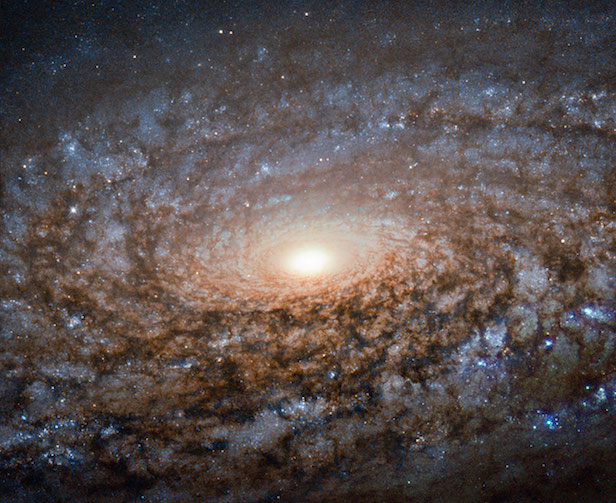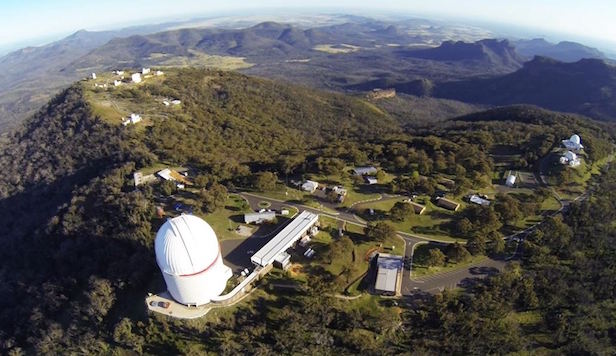Galaxies swell up as they age
Analysis of over 800 galaxies shows that there is a relationship between a galaxy’s age and size

Stars inside young galaxies move in a more orderly fashion around the galaxy’s disc. Image credit: ESA/NASA/Hubble/S. Smartt (Queen’s University Belfast)/R. Gendler
The latest result in galaxy evolution by an international team of researchers shows that as galaxies age, they grow larger and puffier. The team, including researchers from the Australian National University (ANU) and the University of Sydney, studied over 800 galaxies of all kinds in order to deduce the effects of time on a galaxy’s size.
Professor Matthew Colless, director of the ANU Centre of Excellence for All-sky Astrophysics in 3D (ASTRO 3D), says that when a galaxy is young its internal stars orbit along the galactic disc in an orderly fashion. This can be compared to cars going around a race track. “All galaxies look like squashed spheres, but as they grow older they become puffier, with stars going around in all directions,” says Colless. “Our Milky Way is more than 13 billion years old, so it is not young anymore, but the galaxy still has both a central bulge of old stars and spiral arms of young stars.”
In order to determine a galaxy’s shape, the research team recorded the movement of stars using an instrument called SAMI. This instrument is attached to the Anglo-Australian Telescope at the ANU Siding Spring Observatory, Australia. SAMI looked at 843 galaxies with a very wide variety of masses.

The Siding Spring Observatory is located in New South Wales, Australia.
The relationship between galaxy shape and age had not been properly determined beforehand, so to see an obvious connection was pleasantly surprising. This could also point to a more fundamental relationship. “As a galaxy ages, internal changes take place and the galaxy may collide with others,” says Dr Jesse van de Sande from the University of Sydney and ASTRO 3D.“These events disorder the stars’ movements.”
“Young, blue stars grow old and turn red,” says Dr Nicholas Scott, also from the University of Sydney and ASTRO 3D.“When we plotted how ordered the galaxies were against how squashed they were, the relationship with age leapt out. Galaxies that have the same squashed, spherical shape have stars of the same age as well.”
Dr van de Sande explains that scientists knew there was a link between a galaxy’s age and shape, but only in the more extreme cases. These galaxies consist of the relatively very flat and very round ones. “This is the first time we’ve shown shape and age are related for all kinds of galaxies, not just the extremes – all shapes, all ages, all masses,” says van de Sande.
The team are still searching for the fundamental relationships that can help explain the many complexities astronomers see in galaxies. “To see those relationships, you need detailed information on large numbers of galaxies,” says Dr Julia Bryant, lead scientist for the SAMI instrument.
Keep up to date with the latest news in All About Space – available every month for just £4.99. Get 5 issues of All About Space for just £5 with our latest offer!





